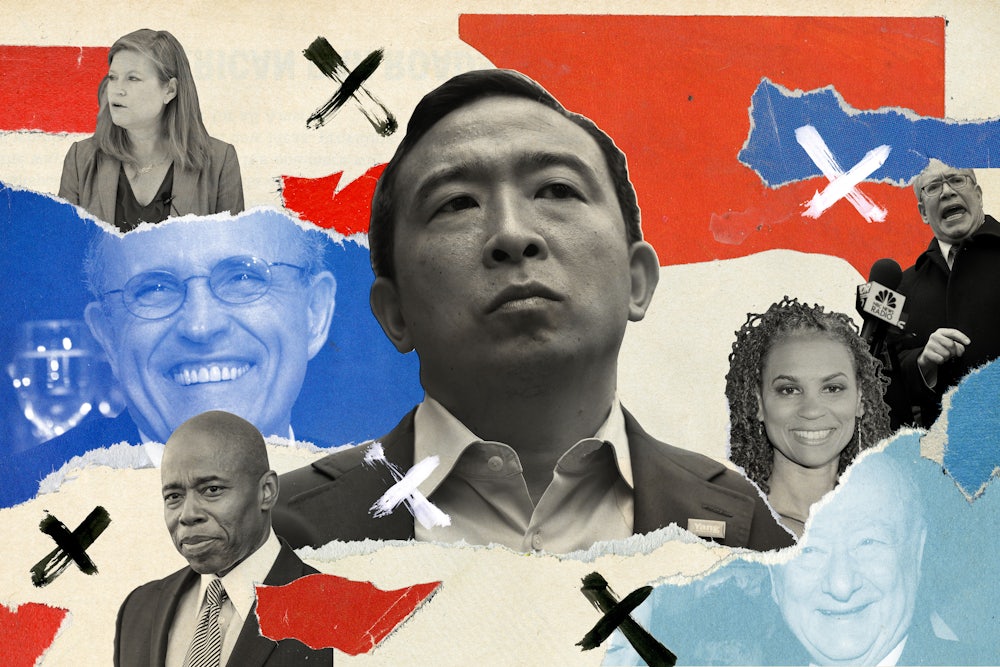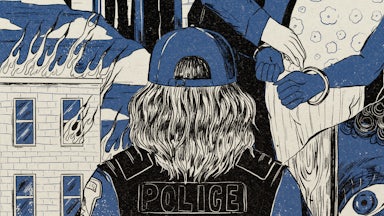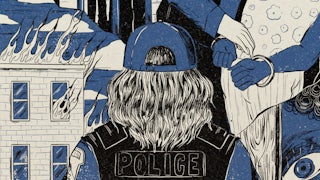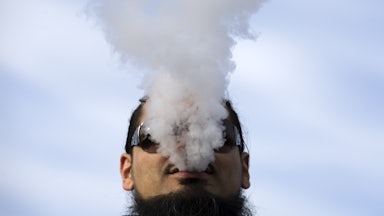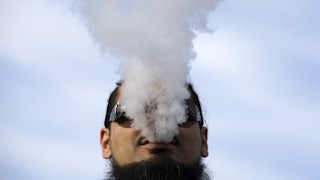Once, mayors of New York City were towering national figures. Fiorello LaGuardia inspired a musical. John Lindsay, who exuded patrician charisma as he walked the streets of Harlem in the 1960s, was the first of four modern mayors to run for president. The combative Ed Koch even waded into foreign policy, ridiculing the United Nations as a “cesspool.” More recently, Rudy Giuliani, for all his right-wing toughness on crime, reveled in the title “America’s mayor” after the Twin Towers toppled. And when New York finally turned to an outsider, it chose Michael Bloomberg, one of the richest men on the planet.
Less than four weeks before the June 22 mayoral primary, none of the eight leading Democratic candidates has shown an ounce of the charisma, stature, or sheer force of personality that mayors once used to dominate the headlines—and the city. Most of the leading contenders are competent, to be sure, but it is hard to call any of them inspiring. Even the supposed dynamic outsider in the race, Andrew Yang, has accomplished little in life other than having his presidential campaign peak with an eighth-place showing (2.8 percent of the vote) in the 2020 New Hampshire primary.
There are, of course, other reasons, besides personality, to follow the race to succeed Bill de Blasio (emphasis on the “blah”). The outcome will almost certainly have national implications. New York was, until recently, the national model for the reduction in violent crime, but the recent rise in gun violence threatens to bring back the law and order issue that dogged Democrats during the Nixon and Reagan years. With more than 80 percent of the city’s cubicle-dwellers still working remotely, the mostly empty office towers of midtown Manhattan threaten the essence of urban life and the city’s tax base. And three years after Alexandria Ocasio-Cortez became a progressive icon by winning a low-turnout congressional primary, the mayor’s race will test how far left the city’s Democratic electorate actually tilts. (Hint: In the last contested mayoral primary, in 2013, 63 percent of the voters were 45 or older, which argues against a youthful leftward surge.)
But with less than a month left
before the primary, the main theme to emerge from this race is chaos. The New
York City primary represents the largest experiment
in ranked-choice voting in American history. As a result, reliable polling for
the primary is almost nonexistent, since leading polling
firms recoil at the time-consuming complexity of asking respondents to rank
their top five favorites. Given the slothful pace at which the city tallies
votes even in normal elections, we may not know the winner of the June 22
primary until sometime in July. When I asked Maya Wiley, a former de Blasio
counsel and legal commentator for MSNBC, about the potential for an agonizingly
slow count, she said with a laugh, “I’m wondering if that means that I can
go to the beach.”
Handicapping a primary in which all polls are suspect and voters are confronted with a new system for filling out their ballots is daunting and perhaps even foolhardy. But interviews with political insiders did yield a rough consensus about the four candidates who appear to be in the strongest position at the moment. Begin with Yang, whose appeal may be fading as his ignorance of the city (he has never voted in a mayoral primary) collides with his prior image as the smart guy with a “MATH” lapel pin. Eric Adams, a former police officer and current Brooklyn borough president, is running an explicitly law and order campaign. Kathryn Garcia, who resigned in protest as de Blasio’s sanitation commissioner to run, has emerged as the queen of the newspaper endorsements after winning the imprimatur of The New York Times and the Daily News. And Wiley, meanwhile, appears to be the strongest candidate from the fractious left.
Aside from Yang, all of these candidates—no matter how they portray themselves—are insiders. Adams, who has been plotting a mayoral race for more than two decades, was a state senator before he was elected borough president in 2013. Borough president, by the way, is an only-in-New-York post that combines a grand title with minimal power. Scott Stringer—whose once top-tier campaign was upended by a vigorously denied accusation of sexual misconduct—wins the award for upward office-jumping; he has been in public office since 1992: first in the state assembly, then as Manhattan borough president, and as city comptroller. Wiley, as de Blasio’s top lawyer, championed an aggressive legal theory to shield the mayor’s communications with outside political advisers from the city’s open-government statutes. And Garcia exudes an infectious, albeit surprising, enthusiasm for her years in the Sanitation Department. When I asked her in a phone interview why she stayed so long in the de Blasio administration if she had mixed feelings about the mayor, Garcia replied, “I loved my job. And I loved the people I was working with. We were really pushing the city on climate change issues.”
Campaigning during a pandemic is much more likely to inspire Zoom fatigue than excitement. So it is obviously unfair to compare this race to the exuberant days in the 1960s when both William F. Buckley and Norman Mailer ran for mayor as protest candidates. And it will be hard to top the 1977 Democratic mayoral primary, which featured Koch, Bella Abzug, and Mario Cuomo. But still, the current primary feels more like a dutiful slog than an exuberant referendum on the future of New York.
The sheer drudgery of the race may stem from the inevitable decline in the city’s tabloid newspaper culture. Once, the tabloids gloried in every misstep on the campaign trail—and heralded everything from Giuliani’s marital woes to Bloomberg’s and de Blasio’s unfortunate encounters with groundhogs on February 2. But these days, the Daily News, owned by the parsimonious Tribune Publishing Company, which itself was just devoured by a hedge fund, is a shadow of its former self. The New York Post remains a Rupert Murdoch plaything, but the tabloid seems far more concerned with its Donald Trump fanboy pose and trolling the Biden White House than with aggressively covering the mayor’s race. During the past year, the Post has been obsessed with two local stories—crime is supposedly turning New York into a dystopian hellscape, and everyone who counts is moving to the Hamptons or leafy towns in Connecticut.
We may also have reached the tipping point, with the election of Donald Trump, when Tip O’Neill’s dictum—that all politics is local—has been reversed. These days, even local politics are national. Washington is what matters—and not who gets to move into Gracie Mansion. And if New York voters still crave operatic excess from their public officials, that quality is abundantly available in Albany with the trials, tribulations, and lavish book advances of Andrew Cuomo.
The biggest cleavages in the mayoral race are over crime. While levels are far below the frightening numbers from the late twentieth century, there is a widespread perception that the city, especially the subway, is more dangerous than when Bloomberg was mayor. Whether or not it’s true, in a city that depends so heavily on the return of tourism, perceptions are fused with reality, which is why the recent broad-daylight shootings in Times Square were so troubling.
At one end of the spectrum on crime is Adams—a supporter of some aspects of the discredited Bloomberg stop-and-frisk policies—who is unabashed about stressing his hard-won knowledge of the mean streets. At a weekend rally in the Dominican-American neighborhood of Washington Heights (yes, the spot that inspired the Lin-Manuel Miranda musical In the Heights), Adams declared, “I ask any other candidate running, have they ever witnessed someone shot in the head, execution-style, right in front of them?”
Yang has also tacked right on crime, which could reflect conviction or that the candidate’s internal polls (which are shared with the media when he is leading) show that the top issue in the race is “bringing crime down.” Also worthy of note: Yang’s top strategist, former Bloomberg campaign manager Bradley Tusk, used to count the dominant police union, the Police Benevolent Association, as a client of his strategic consulting firm.
Garcia, too, said in our interview, “I am concerned about the uptick in subway crime, and its seeming randomness. I lived through the 1970s and 1980s, and it’s so undermining.… I just didn’t take the subway after dark when I was a teenager. You just didn’t do that.” While Garcia supports increasing the police presence on the subway, she also took pains to stress the need for “embedding mental health professionals with the police so they can make an assessment about whether a person is a danger to themselves or others.”
During the first primary debate on May 13, Wiley was the rare candidate to oppose adding more police on the subways and in stations. As we chatted in front of a community center on Manhattan’s Upper West Side earlier this week, I asked her whether she was resolved to stick to her promise to cut the police budget sharply even if there were a major uptick in crime. “I am,” she replied, “and I’ll tell you why. Because the balance we need is recognizing that we need police to keep us safe. For example, by keeping illegal guns out of our city and off our streets. There’s a job for policing, but … what so many folks don’t realize is that we’re dumping money into bad policing.”
In 1970, drawing partially on 1969
mayoral races around the country, Richard Scammon and Ben Wattenberg wrote The
Real Majority, one of the more prescient political books of the last
half-century. These two moderate Democrats (Scammon was the director of the
census under John Kennedy, and Wattenberg was a Lyndon Johnson speechwriter)
warned that their party risked losing the white urban middle class by
ignoring the ripple effects of social change.
It was not a popular viewpoint among liberals, who recoiled against the book’s warning: “If the Republicans capture the center as Democrats go to the extreme, we may see Republican Presidents in the White House for a generation.” But sadly, Scammon and Wattenberg were right: The GOP won four of the next five presidential elections—and each of those victories from 1972 to 1988 was a landslide.
None of this is to argue that history is destiny for the Democrats. But it does serve as a reminder that mayoral elections—even when devoid of flashy candidates and dramatic storylines—can still provide lasting clues about our political future. And that is why the New York City mayoral primary and the national platform it will provide for the eventual victor is by far the most important election of 2021.
